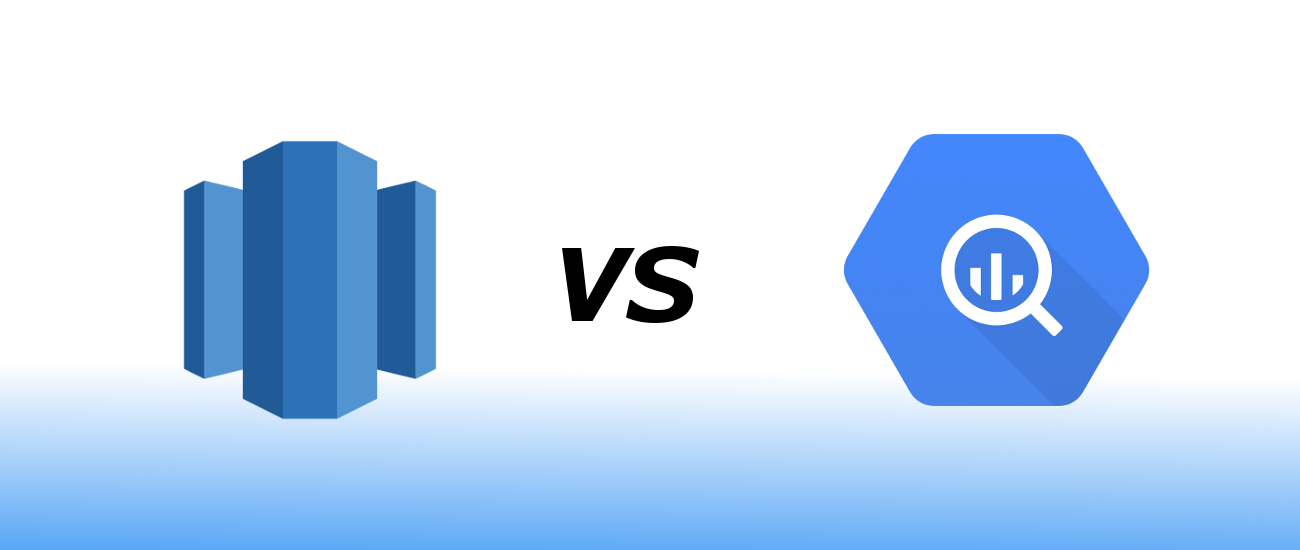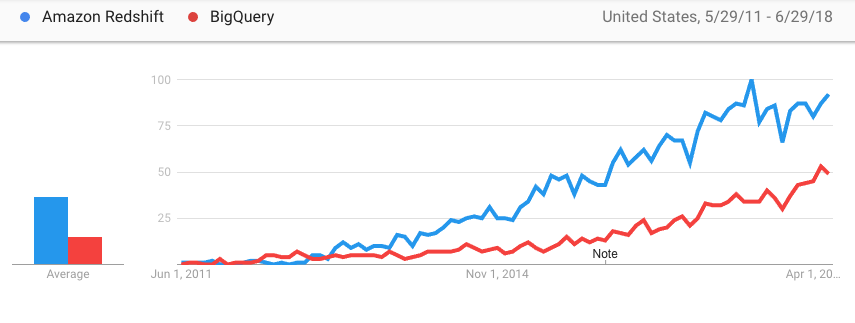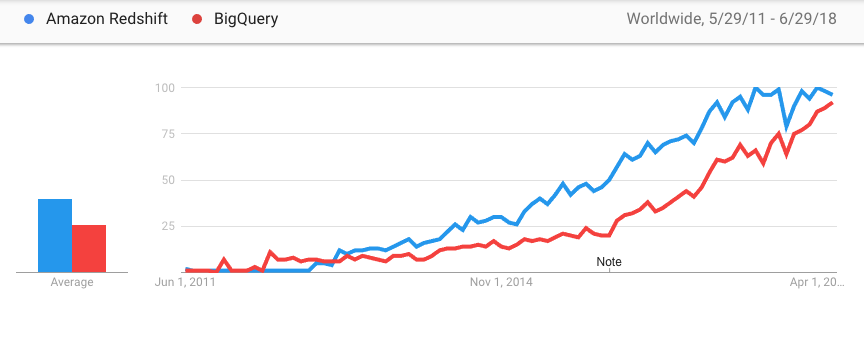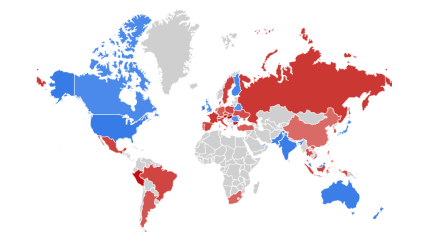BigQuery vs Redshift in 2018
29 June 2018 Big data analytics tools are a constantly shifting landscape. Most organizations want to be data driven,
this means collecting your data into a data warehouse where it can be explored. The two biggest solutions
in the space are AWS Redshift and Google BigQuery. Here is what your big data administrator needs to
know to choose a solution.
Big data analytics tools are a constantly shifting landscape. Most organizations want to be data driven,
this means collecting your data into a data warehouse where it can be explored. The two biggest solutions
in the space are AWS Redshift and Google BigQuery. Here is what your big data administrator needs to
know to choose a solution.
Architecture
Both of these solutions are focused on OLAP (Online Analytical Processing) workloads. These are usually column store databases. They are designed for fast analytics, not transactions like your product’s main API.
Redshift was launched October 2012. It runs a forked version of PostgreSQL 8.0.2. It’s changed under the hood to perform better on analytical workloads and is missing some postgres 9.0 features. Redshift’s mental model is that of managing a cluster of nodes. You need to choose the number of CPUs and storage for your needs.
BigQuery was launched May 2010. It is a productionized version of an internal Google Database called Dremel. It is a serverless model, there is no concept of hardware you create tables, upload your data and analyze it.
You trade speed for flexibility.
In Redshift you are given control over how to tune your big data database. You’ll want a dedicated person to tweak the data model and fine tune the cluster for the best performance and lowest infrastructure cost. The payoff is that frequently queried data becomes cheaper to analyze, this results in lower cost of generating reports and analysis.
BigQuery is simpler. Use it if you are not sure what your analytical data model should look like or you have lots of data that is rarely queried. BigQuery could be more appropriate if you don’t project needing a large analytical team in your organization, or can’t afford to dedicate resources to build world-class analytics. If you are a Data Scientist working with a new dataset, you could build a prototype faster with BigQuery. Similarly if your organization isn’t a technology company, or you have “Medium Data”, BigQuery will be easier to get started with.
AWS vs GCP
Both Amazon and Google are competing to offer the most competitive cloud. This benefits consumers as you can assume pricing will be comparable for similar services. The differentiator will be the ecosystems and where your data is.
Data exhibits a “gravitational” property. Say your main product’s database is on Amazon, there are very real cost incentives to use Redshift as Amazon will not bill for transferring the data within it’s cloud. Same goes for loading data into BigQuery from Google Cloud Storage.
There’s also considerations for analysis. Do you plan on using Amazon Sagemaker for developing Machine Learning models or do you want to use Google’s ML Engine? Do you want to run analysis on unstructured data in S3 with Amazon Athena?
BI tools
As the most popular datawarehouses in the space, both solutions have a mature ecosystem of Business Intelligence tools. Note before using any BI tool, you’ll want to build an ETL pipeline that copies the production data into the datawarehouse. One exception is if your building a prototype for a stakeholder and it’s main backend is a datawarehouse. BI tools should also be sandboxed by setting up a read-only user at the database level, this way your analysts cannot damage your data and are free to experiment.
Metabase - free open source BI tool. Popular with startups as you can install it in a VM for a BI solution.
Looker - paid product. Uses proprietary SQL extension LookML for enhancing your SQL queries.
Tableau - enterprise BI solution. Here’s a demo of it’s UI.
Google Analytics 360 - enterprise version of Google Analytics. You used to have to have google cloud costs in excess of $150,000/year. They no longer state this on their pricing page.
One of the advantages of Redshift was that it runs standard SQL. Meaning all SQL tooling works out of the box on Redshift. Whereas BigQuery ran a variation of SQL that had it’s incompatibilities. (BigQuery added standard SQL support in 2016.) This could explain Redshift’s early dominance in the space. These days most BI tools support both platforms equally well.
Trends
 Google Trends
show that Redshift is more popular than BigQuery in the United States. It seems that data is viewed
as an area to invest in for many organizations. As such they are okay investing into developing
their datawarehouse and having fulltime engineers work on this problem if it gives them
a competitive advantage. The fact that BigQuery used a variant of SQL may explain why Redshift
was able to overtake BigQuery despite it’s 2 year headstart.
Investing in something that is nonstandard is viewed as more risky for an organization.
Google Trends
show that Redshift is more popular than BigQuery in the United States. It seems that data is viewed
as an area to invest in for many organizations. As such they are okay investing into developing
their datawarehouse and having fulltime engineers work on this problem if it gives them
a competitive advantage. The fact that BigQuery used a variant of SQL may explain why Redshift
was able to overtake BigQuery despite it’s 2 year headstart.
Investing in something that is nonstandard is viewed as more risky for an organization.
 We see most search volume from the big tech hubs, Washington, California, New York. Interestingly, in Georgia
more people are searching for BigQuery.
We see most search volume from the big tech hubs, Washington, California, New York. Interestingly, in Georgia
more people are searching for BigQuery.
 Worldwide, interest in BigQuery was overtaken by Redshift and in recent years the gap has been closing.
Worldwide, interest in BigQuery was overtaken by Redshift and in recent years the gap has been closing.
 It seems like Redshift is more popular in the United States, India and Australia.
BigQuery is more popular in South America and Europe.
It seems like Redshift is more popular in the United States, India and Australia.
BigQuery is more popular in South America and Europe.
Conclusion
Datawarehousing technology is a big decision for organizations. Leveraging your data effectively can be a competitive advantage. It’s not always clear for stakeholders how much to invest.
When investing heavily organizations invest in Redshift due to it’s perceived safety. However for smaller organizations or projects, time-to-market would be faster with BigQuery. First determine what your current needs are and project what they will become. Then decide on the tool that is right for you.
I hope this post helps your big data administrator decide which tool is right for you. If you need help assessing your existing software strategy or plan out a new project you can contact me here.
If you need help solving your business problems with software read how to hire me.
comments powered by Disqus